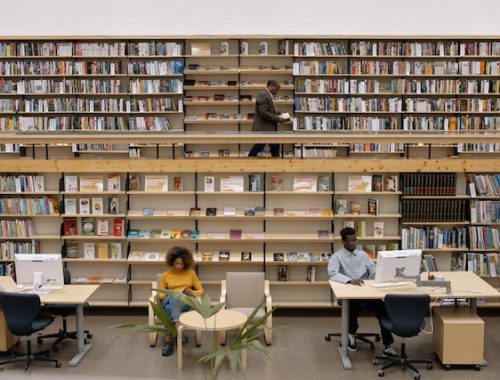Proprietary Schools’ Student Aid Studied
Although proprietary schools, which specialize in training students for various skilled jobs, enroll a higher percentage of disadvantaged students compared to other types of postsecondary education institutions, a lower percentage of these students receive financial aid when compared to students at private colleges and universities. This finding was one of the key discoveries in a recent study conducted by the National Commission on Student Financial Aid, which examined the financial aid status of students attending proprietary schools.
According to the study, a typical student attending a proprietary school has to cover $2,160 in “unmet need” after the school’s financial aid office determines their financial aid package, which includes grants, loans, work-study, parental contributions, and student earnings. This unmet need amounts to approximately 29 percent of the student’s education-related costs.
In contrast, students attending public four-year colleges face an unmet need of about $1,488, which is equivalent to 24 percent of the total cost of education. Students at private colleges have an unmet need of $1,447, or 18 percent of the total cost of education.
Proprietary schools make up nearly two-thirds of all postsecondary institutions and enroll three-quarters of all postsecondary vocational-education students. There are approximately 6,000 proprietary institutions nationwide. The study, titled “Proprietary Vocational Schools and Federal Student Aid: Opportunities for the Disadvantaged,” was conducted by Wellford W. Wilms, a professor of education at the University of California, Los Angeles, on behalf of the financial-aid group.
The study is based on a survey of 277 proprietary schools accredited by the Association of Independent Colleges and Schools, the National Association of Trade and Technical Schools, and the National Accrediting Commission of Cosmetology Arts and Sciences. It found that on average, 38 percent of cosmetology students, 50 percent of trade and technical students, and 57 percent of AICS students receive financial aid. This is in comparison to 31 percent of students at traditional public four-year colleges and 57 percent of students at traditional private four-year colleges who receive financial assistance.
The study also highlights several major differences between proprietary schools and more traditional postsecondary institutions. According to the study, proprietary schools provide financial assistance to a larger percentage of minority students. Approximately 54 percent of aid recipients at proprietary institutions are minorities, while the figure is only 16 percent at private institutions and 35 percent at public institutions.
Additionally, the study reveals that 56 percent of those receiving financial aid at proprietary institutions have family incomes under $6,000, compared to only 18 percent at private institutions and 41 percent at public institutions. Moreover, 54 percent of aid recipients at proprietary schools receive no parental support. In contrast, only 13 percent of recipients at private institutions and 39 percent at public institutions lack parental support.
The results of the survey conducted by Wilms were compared with the findings of two other studies. One was an analysis of financial-aid trends among private colleges and universities in 1982, conducted by Virginia Hodgkinson and Julianne Still Thrift for the National Institute of Independent Schools. The other was a study of public colleges conducted by Jacob A. Stampen for the National Association of State Universities and Land-Grant Colleges, the American Association of State Colleges and Universities, and the American Association of Community and Junior Colleges.
The study concludes that students who choose to attend proprietary institutions for vocational training face limited financial alternatives due to the lack of campus-based, state, and institutional funds. These students must rely on personal savings, part-time jobs, or make greater financial sacrifices compared to those enrolled in traditional postsecondary education sectors. The study asserts that in order to provide equal access to postsecondary institutions that best suit students’ needs and aspirations, these apparent inequities must be addressed through a comprehensive review of federal financial aid policies.
The financial-aid commission plans to conduct a second study to examine the extent to which proprietary-school students are excluded from the government’s Guaranteed Student Loan Program.


